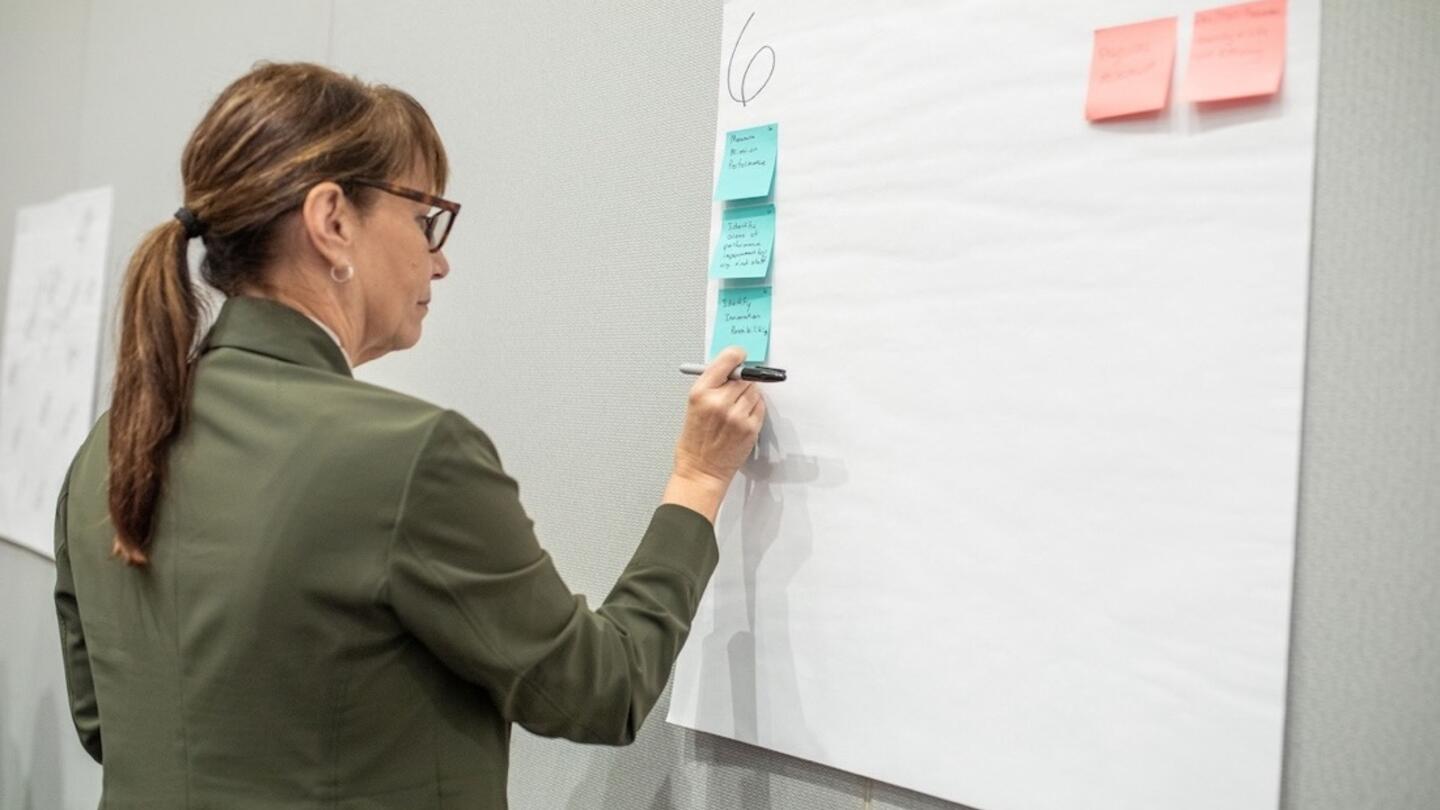In today's competitive business environment, maintaining high job engagement is important for success. Employees who feel engaged are more productive, satisfied, and committed to their companies. But how do you foster such engagement in your team?
Engaging employees starts with recognizing each individual’s unique strengths and empowering them to contribute meaningfully. Employees who see how their efforts create value for others feel a deeper sense of purpose and motivation.
Encouraging autonomy, open communication, and opportunities for growth allows people to apply their talents and drive both personal and organizational success. By prioritizing an environment that supports collaboration and individual development, businesses can inspire engagement that fuels long-term progress
Recognizing signs of low job engagement
Recognizing the signs of low employee engagement can help you address the issue before it negatively affects your organization. Identifying these indicators can help managers and leaders intervene with targeted strategies that boost morale and productivity.
How can you tell if your employees aren’t engaged at work?
- Frequent absenteeism or tardiness
- Decline in overall productivity and work quality
- Lack of enthusiasm and initiative in tasks
- Minimal participation in team meetings or discussions
- Increased complaints or negative comments about work conditions
- Higher turnover rates
7 employee engagement ideas
A positive work culture is the bedrock of engaging employees. When employees feel valued and heard, they’re more likely to invest in their work and the company’s mission.
Creating an environment of openness, while treating each individual with dignity, empowers employees to bring their best selves to work. This mutual benefit ensures that when employees thrive, so does the organization, as both are motivated by shared goals and the value they create together.
So, what are the best strategies to improve employee engagement and boost workplace productivity?
Sign up for Stand Together's Rethinking Work & Learning newsletter to get the latest stories, ideas, and trends on the future of employment.
1. Empowering employees through growth opportunities
Providing avenues for skill enhancement shows investment in your team’s future. When individuals are empowered to continually develop their skills, they move closer to self-actualization — a process of unlocking their unique potential to contribute meaningfully to the team and beyond.
Ways you can empower your employees in the workplace:
- Providing continuous learning and professional development options
- Offering career advancement pathways
- Encouraging mentorship and coaching for skill-building
- Recognizing and supporting individual career aspirations
- Offering cross-training programs to build new skills
By prioritizing personal job growth, organizations not only nurture their employees’ potential but also cultivate a dynamic, innovative workforce that fuels ongoing success.
2. Clearly communicating expectations
Employees benefit from clarity in their roles and responsibilities. Regular check-ins, open-door policies, and transparent decision-making processes foster a culture where employees feel empowered to share ideas and explore new solutions.
When employees understand expectations and feel valued, they’re more likely to invest fully in their work, driving progress and success throughout the organization. Creating space for employees to question assumptions and contribute to problem-solving not only boosts engagement but also spurs innovation.
3. Unlocking employee potential through internal mobility
When employees see opportunities to evolve within the organization, they’re more likely to stay loyal and motivated. Internal mobility helps employees grow while driving long-term success.
This approach also addresses skill gaps, allowing companies to develop talent in-house, and aligning personal growth with organizational goals. Supporting self-actualization through internal mobility enables employees to pursue meaningful growth, fostering a sense of purpose and connection to the larger vision.
4. Acknowledging employee contribution and encouraging empowerment through incentives
Everyone wants to feel appreciated, valued, and respected in the workplace. Aligning incentives with employee motivations can deepen this culture of recognition. When employees feel their unique contributions are valued through both financial and non-financial rewards, such as flexibility, growth opportunities, or meaningful feedback, they’re more motivated to invest their talents in the organization’s mission.
By thoughtfully matching incentives with what employees truly value, you create a workplace where everyone is encouraged to excel and reach their full potential. This acknowledges the inherent worth of every individual and promotes a culture of dignity and respect within the workplace.
5. Offering work-life balance support
Maintaining a healthy work-life balance is more important than ever in today’s fast-paced world. Employers who support work-life balance initiatives help foster a more engaged and productive workforce, encouraging employees to pursue personal growth and self-actualization.
Below are some potential options for promoting work-life balance within your organization:
- Flexible work hours to accommodate personal commitments
- Remote work opportunities to reduce commuting stress
- Wellness programs, offering gym memberships or meditation sessions
- Paid time off for volunteering and community service
- Child care support or family leave policies
6. Aligning hiring decisions with company culture to boost employee engagement
Making hiring decisions consistent with your stated culture is essential because it ensures that new employees are aligned with your company’s values and ways of working from the start.
When individuals naturally fit within the cultural framework, they are more likely to engage deeply with their roles and contribute meaningfully to the organization. This alignment fosters a sense of belonging and shared purpose, boosting morale and employee engagement.
7. Fostering a culture of innovation and creativity
A bottom-up approach can empower employees to take charge of their own development by leveraging their unique knowledge and experiences to discover what works best for them.
This decentralized method fosters innovation and ensures that growth emerges organically from everyone’s contributions. When employees see a future for themselves within the company, they’re more likely to give their best effort and remain motivated and committed to the organization.
Why does innovation and creativity benefit a workplace?
- Fosters a culture of openness where the free exchange of ideas leads to continuous improvement and problem-solving.
- Drives mutual benefit by enabling employees to innovate to advance their own growth and contribute to the organization’s collective success.
- Encourages bottom-up problem-solving, allowing employees to use their knowledge and unique perspectives to approach challenges creatively, leading to more effective solutions.
- Promotes dignity by recognizing the inherent worth of each employee’s contributions, fostering an environment where individuals feel that their ideas are respected and valued.
Fostering success by engaging employees
Improving job engagement isn’t about ticking boxes or following a formula. It’s about creating an environment where employees feel valued, heard, and empowered to grow. Companies can unlock their team’s full potential by focusing on communication, professional development, acknowledgment, and work-life balance.
When employees are genuinely engaged, they don’t just work — they invest their energy, creativity, and passion into building something great. And that’s a win-win for everyone.
Read more about how to engage employees
- Discover how engaging employees in decision-making can empower teams, leading to more effective problem-solving and organizational success.
- Principle-Based Management™ empowers people to create long-term value for others, fostering success across teams, communities, and society.
- Wondering how to enhance employer/employee relationships? Start with mutual benefit!
***
The Stand Together community partners with changemakers who are tackling the root causes of America’s biggest problems.
Learn more about Stand Together’s efforts to transform the future of work and explore ways you can partner with us.

Why AI may help more people achieve the American Dream.

Data centers are at the forefront of the ‘new economy.’ But what exactly are they?

Here’s how to bridge the disconnect between employers and employees.

Lessons learned from Colorado.
